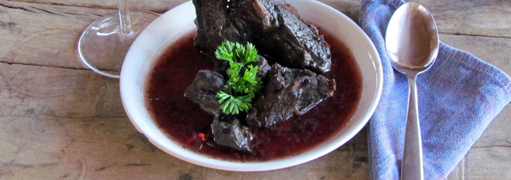Eating In: Braising Turns Tough Cuts Into Tender Morsels Of Flavor
Turning Chewy, Cheap Cuts Into Lusciously Flavorful Food


A tough buck becomes soft and tender after a few hours in the Dutch oven.
Ari LeVaux








